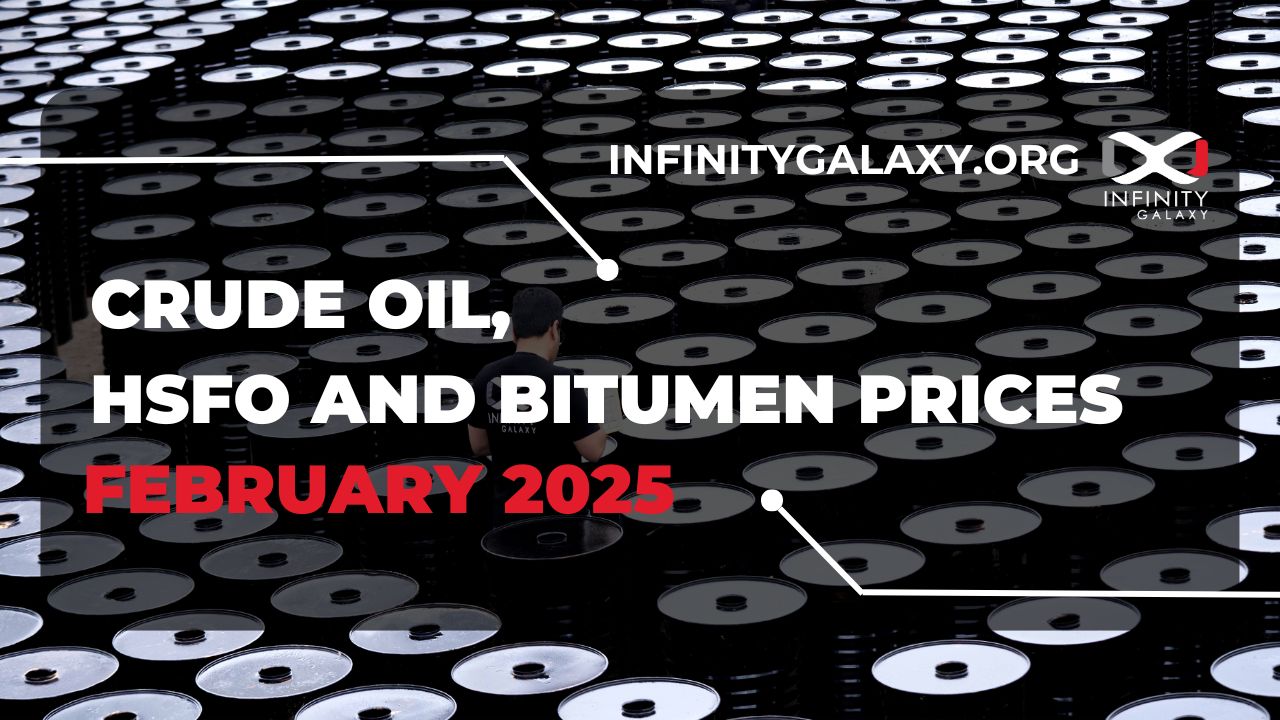In the final days of the year 1401, I decided to investigate the trend of crude oil, fuel, and bitumen prices in the tumultuous second half of this year.
The year 2022 was influenced by the war between Russia and Ukraine, which caused prices to experience unprecedented growth; the price of oil reached its highest level in the past eight years, and the price of Iranian bitumen approached the border of dollar500 per ton.
However, concerns about price increases, inflationary growth, and the risk of entering a inflationary recession in all countries of the world caused prices to be adjusted to some extent from mid-August 2022 onwards.
In this article, I will examine the trend of crude oil, fuel, and bitumen prices from the beginning of September 2022 until the end of February 2023 and determine their correlation.
Following corrections and reductions from August 2022, the price of Brent crude oil plummeted below dollar100, and this corrective trend after a sudden drop below dollar100 raised concerns that prices could drop to below dollar60.
However, these concerns were alleviated after the decision of OPEC plus to reduce oil production by two million barrels from the beginning of November, causing prices to rise again from the beginning of October.
Despite some analysts attributed this price hike to OPEC plus’s political maneuvering and Saudi Arabia’s betrayal of Biden, the release of US strategic reserves and the risk of a global inflationary recession prevented oil prices from rising above 98 dollars, and again with the announcement of the resurgence of COVID in China and the start of subsequent enforcement of strict quarantines, market fears and a drop in oil prices occurred, but with the change in Beijing’s decision not to renew nationwide quarantines in China, oil conditions improved slightly.
These concerns and fluctuations continued until the beginning of 2023, when the World Bank released news indicating fears of severe recession in the European Union, the United States, and some developed countries. This caused the price of oil to once again be unable to rise, and it appeared that Brent crude oil was on the verge of a fall and stability below the 70 dollar channel.
However, news of China’s economic situation improving sparked the necessary excitement to drive prices higher once again, and oil prices climbed back up to the 80 dollar range.
Analysts believe that it is possible for Brent crude oil prices to return to the 100 dollar channel by the second half of 2023, around July 2023 (Tir 1401), but there are still no clear signs or signals in the market regarding this matter.
However, the most likely scenario for oil prices is the same range of 70 dollar to 90 dollar, which has remained in this range over the past three months of 2023. In general, the driving factors and fundamental components influencing oil prices during the second half of 2022 and ending in March 2023 (Esfand 1401) are:
- The Russian-Ukrainian war
- Global inflation and subsequent inflationary recession
- Declining economic growth in various countries due to inflationary recession
- Intensification of COVID in China and the imposition of nationwide lockdowns followed by their suspension
- OPEC’s decision to cut oil production by two million barrels
- International crises
The table below shows the trend of Brent and West Texas Intermediate oil prices:

We can see the same trend in the movement and proportionality with the price of oil in Singapore fuel and Persian Gulf fuel over the past six months; which means that factors affecting the price of oil have directly influenced the price of fuel and it seems that, contrary to past years, technical factors such as cold weather have not led to an increase in fuel prices, and fundamental factors have had a more significant impact on fuel prices over the past six months.
Below, you can see the chart of fuel prices over the past six months, ending in February 2023:

However, conditions in the bitumen market were slightly different. The price of oil, stagflation in various countries, and liquidity shortages in some countries such as India and some East Asian and African countries caused the bitumen market to experience difficult conditions during the first three months of these six months.
Mainly due to price pressures, bulk bitumen exports increased significantly, while packed bitumen exports declined.
Afterward, with changes in oil prices and other factors such as increased bitumen prices in Europe and a sharp decline in the exchange rate of the Iranian Rial against the US Dollar, the demand for bitumen increased, and its price simultaneously increased.
During the months of February and March (Bahman and Esfand), competition for buying vacuum bottoms in various refineries reached above 90% of the base price, and for the first time, competitions above 100% were recorded.
The price of bitumen in India had decreased during two intervals in January (Dey) but for the first time, an increase in the price of bitumen in India was recorded in mid-February 2023 (mid-Dey 1401).
Afterwards, Indian refineries decided to keep prices fixed for March (Esfand), but it seems that prices will increase for the second half of March 2023 (Farvardin 1402) due to an increase in demand in India.
In Bahrain, the price of bulk bitumen also had a downward trend in the past six months, with prices reaching around 325 dollars from about 375 dollars, and it remained stable for a few weeks until the preparation of this report.
In South Korea, there has been a notable increase in the price of bitumen, which began in the third week of December 2022 (Dey 1401) and continued to climb above 450 dollars until the end of February 2023 (Esfand 1401).
This trend coincides with a broader improvement in economic conditions in China.
In general, fundamental factors, in addition to oil prices, had a significant impact on determining the price of bitumen.
It should be noted that during the 5-month period of this 6-month period, we experienced a reduction in ocean freight and, for the first time in February (Bahman), an increase in transportation costs.
Ultimately, it appears that crude oil, fuel, and bitumen are closely interdependent, and crude oil has a direct and significant impact on both other markets.
Check the bitumen price chart below:









